Looking to discover some fascinating Celtic symbols and their meanings? Look no further!
As an Irish local with a deep-rooted love for our rich culture, I’ve curated a list of the 13 most fascinating Celtic symbols and their meanings – those ubiquitous motifs that are intrinsically linked with Ireland and the intriguing Celtic culture.
Aimed at curious travellers like you, this guide will delve into both popular and lesser-known symbols, each carrying centuries of Irish lore and mystique.
My guide to Celtic symbols includes:
- The Claddagh and its meanings.
- The Celtic Cross and how it evolved.
- Symbols synonymous with all things Ireland.
- And some lesser-known, but equally beautiful Celtic symbols.
So, ready to unlock the secrets of these captivating symbols and embrace the ancient wisdom they carry? Let’s dive in together.
Originally published in May 2021, Updated November 2023.
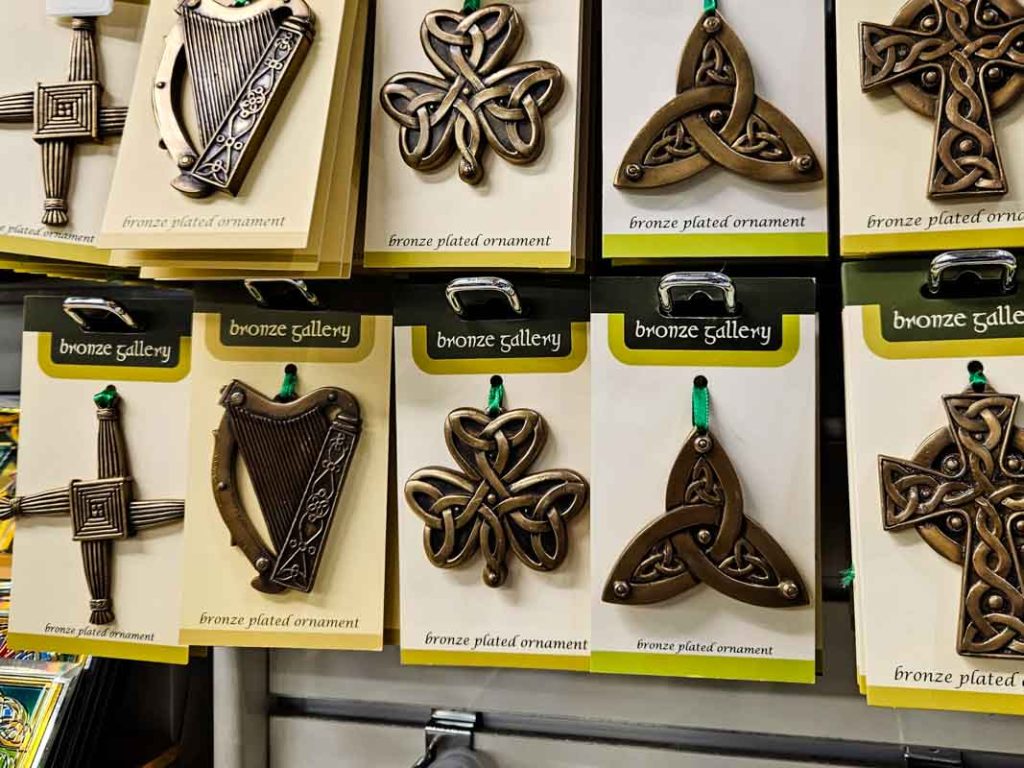
Irish Celtic symbols and their meanings
Ancient Celtic symbols have been around for centuries, and while many have pagan origins, they were later incorporated into Christian culture and religion and today can be seen across many places such as graveyards, churches, and ancient monuments.
The word “Celt” describes a collection of tribes who shared similar religious beliefs, languages, traditions, and cultures. The tribes were spread across Western Europe and included tribes from France, Spain, Britain, and, of course, Ireland.
While their existence was first documented in the 7th or 8th centuries BC, it is believed the Celtic culture began evolving as far back as 1200 BC. The Romans referred to Celts as “Galli” meaning Barbarian.
Celtic culture was strong in Ireland and when Christianity was brought to the Emerald Isle during the 4th and 5th centuries AD, many Celtic traditions were incorporated into the “new” religion. It is many of these ancient Celtic symbols that we still see today in all aspects of Irish modern-day culture and symbolism.
Below are 13 examples of ancient Celtic symbols and meanings to shed some light on where many of the symbols you can see around Ireland originated from and what they represent.
1 Celtic Cross
The Celtic Cross predates Christianity and is believed to be a symbolic compass. It represents the four cardinal directions of Earth, Fire, Wind, and Water. It also represents the mind, body, soul, and heart.
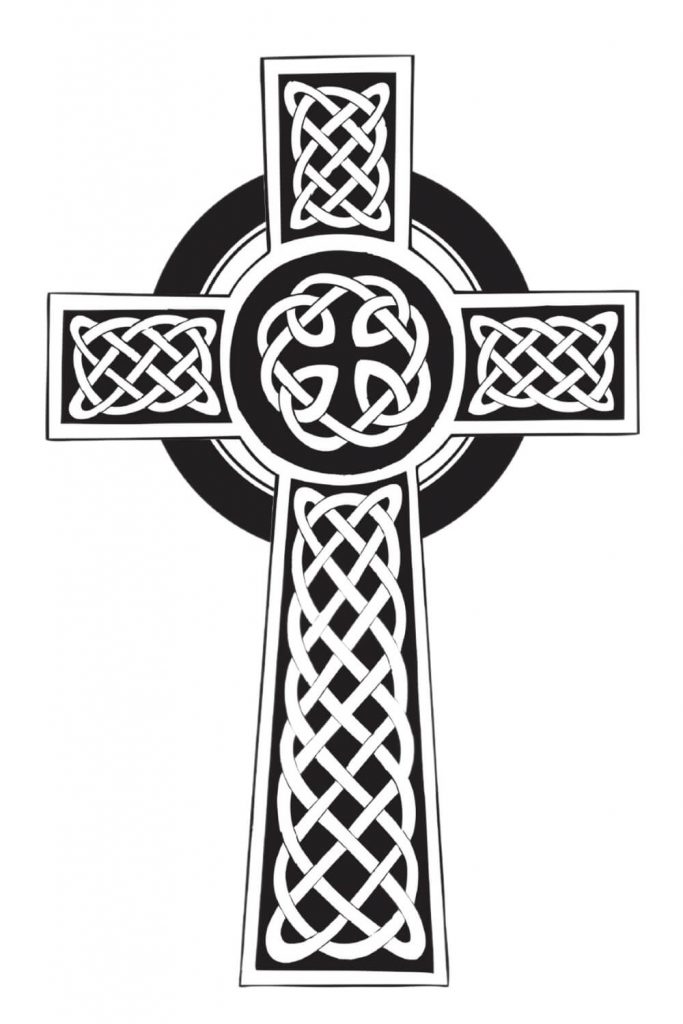
The Celtic Cross emerged in the Middle Ages, and early examples date to around the 9th century. The oldest High stone crosses still standing in Ireland date from between the 8th and 12th centuries.
Notable High crosses with Celtic shapes in Ireland can be viewed at
- Ahenny, Tipperary
- Dysert O’Dea Monastery, Clare
- Glendalough, Wicklow
- Monasterboice, Louth
- Clonmacnoise, Offaly
- Kells, Meath
I’ve seen the High Cross examples on the grounds of the Rock of Cashel, at Glendalough and the three High Crosses at Clonmacnoise (one is pictured below), now housed in the Visitor Centre to protect them from the weather and human erosion. Replicas have been placed outside on the grounds.
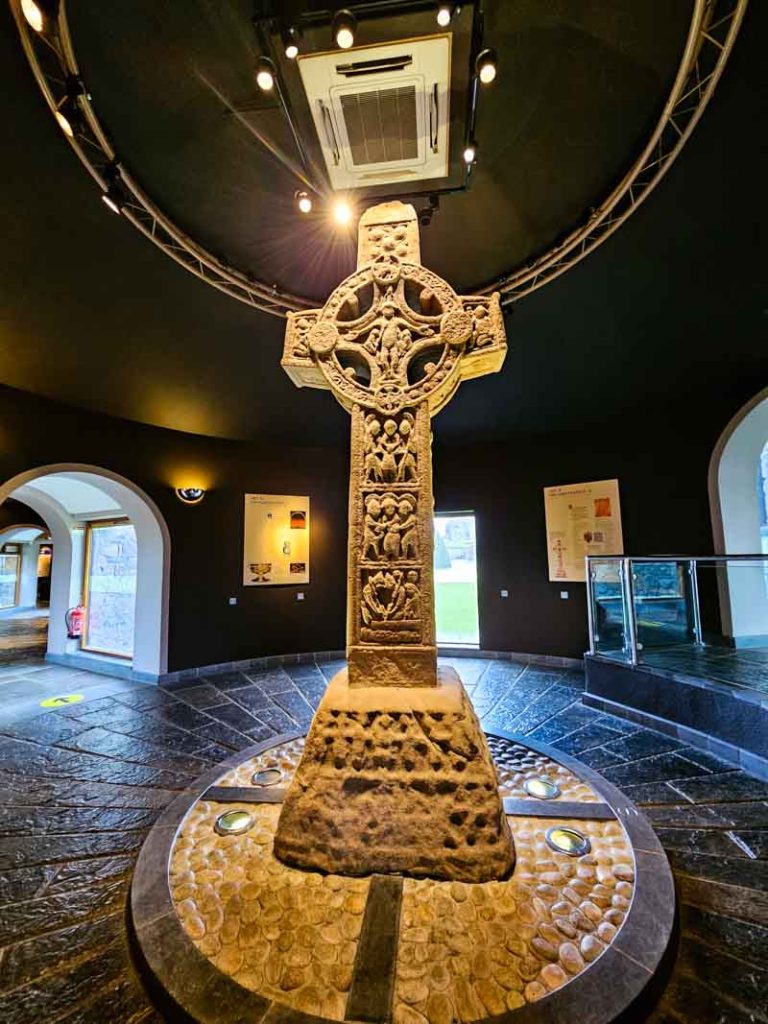
Celtic Crosses were erected on lands in homage to the Christian faith and were popular across Ireland as well as France and Britain. Today, many Church grounds and graveyards across Ireland have examples of it.
Typically, the Celtic Cross is comprised of a Latin cross with a nimbus surrounding the intersection of the arms and stem.
Legend says that the Celtic Cross was introduced to Ireland by either St Patrick or St Declan and that the circle was used to denote the sun to pagans. It was used to appeal to the pagans to convert them to Christianity.
It is said that the Christian cross was placed over the pagan sun to demonstrate the supremacy of Christianity.
The Celtic Cross, as a symbol, represents knowledge, strength, and compassion, while the central ring represents infinite love (god’s endless love) or a depiction of the halo of Christ.
2 Claddagh Ring
The Claddagh Ring is a traditional Irish ring, also called Fáinne Chladaigh in Irish, representing love (heart), loyalty (crown), and friendship (hands) and is something people associate with Ireland as soon as they see it.
It originated in the small Galway fishing village of the same name and was first produced in its current form in the 17th century. However, it is thought to have been based on an earlier version.
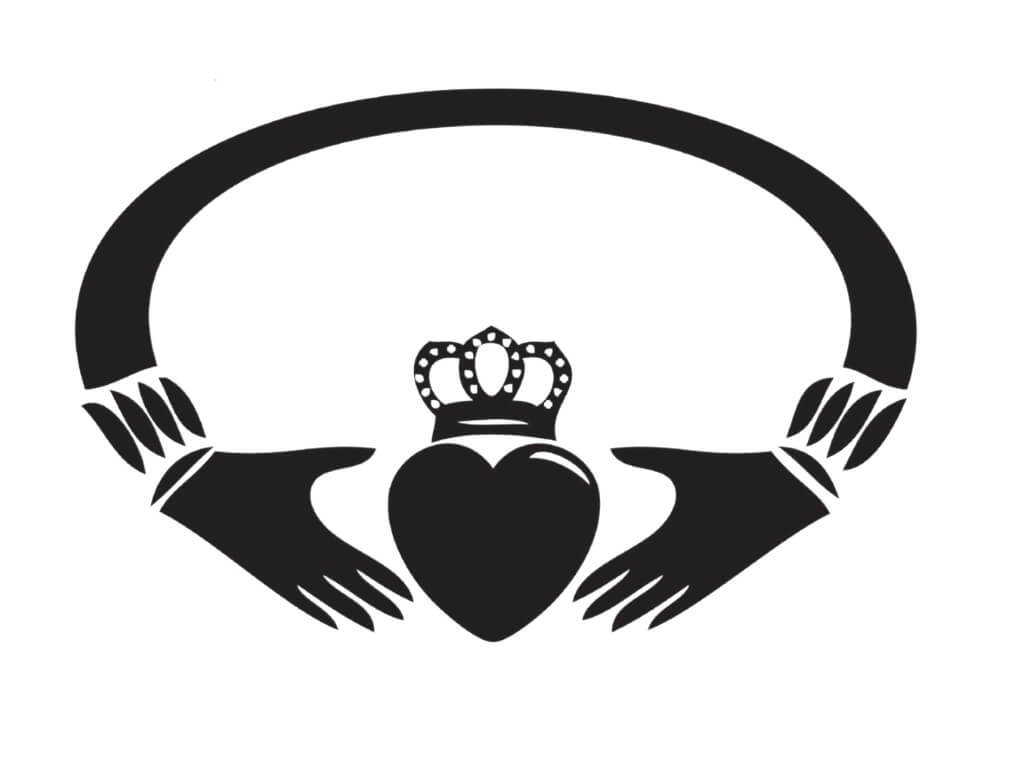
It belongs to a group of European finger rings called fede rings (hands in faith/hands joined in loyalty), which date back to Roman times.
Fede rings were used as engagement and wedding rings in medieval and Renaissance Europe and were based on clasping hands that indicated friendship, love, and betrothal.
The rings became popular from the 12th century and some believed the hands were clasped in faith and prayer.
Nowadays, how the ring is worn conveys the wearer’s relationship status to others.
- Worn on the right hand with the heart pointing to the fingertips denotes the wearer is single and maybe looking for love.
- Worn on the right hand with the heart pointing to the wrist denotes the wearer is in a relationship, that someone has “captured their heart”.
- Worn on the left hand with the heart pointing to the fingertips denotes the wearer is engaged.
- Worn on the left hand with the heart pointing to the wrist denotes the wearer is married.
In Irish tradition, the Claddagh is passed down from mother to daughter and kept in the family for generations. And it is often worn to symbolise Irish identity.
My family have many examples of Claddagh jewellery including rings and necklaces such as the one I own below.
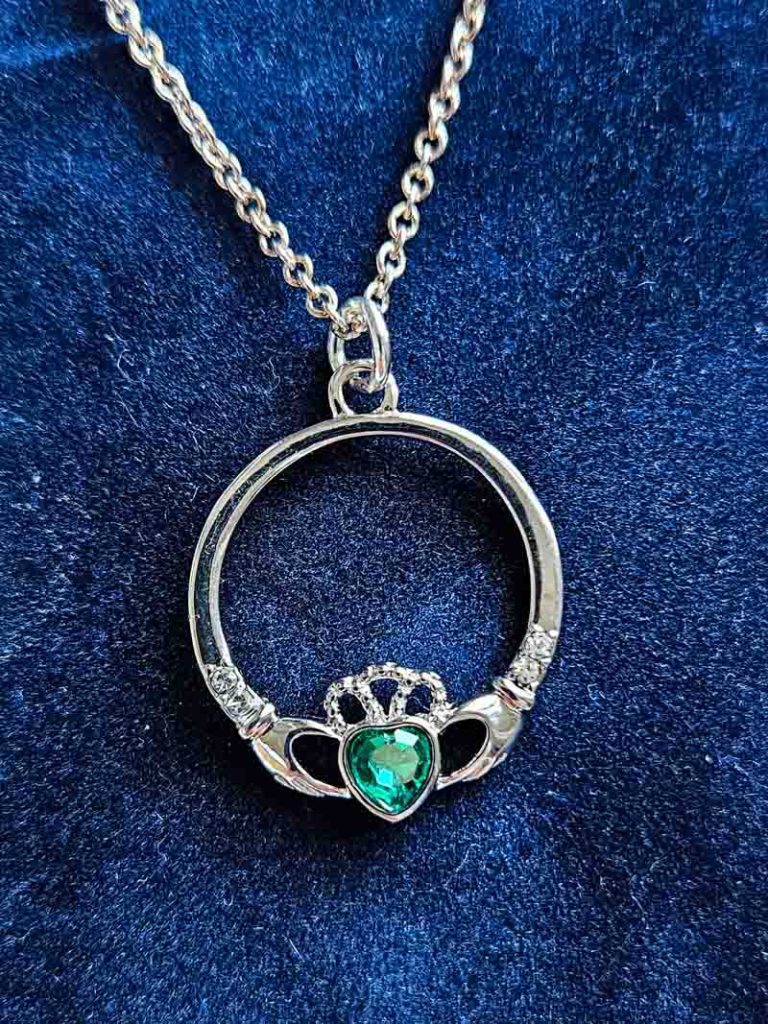
3 Celtic Harp
This symbol is one of the most widely associated with Ireland and was first adopted as the emblem of the Irish Free State in 1922 upon separation from the United Kingdom.
It was registered as the coat of arms of Ireland in 1945 but was used by the Kings of Ireland as far back as the 13th century.
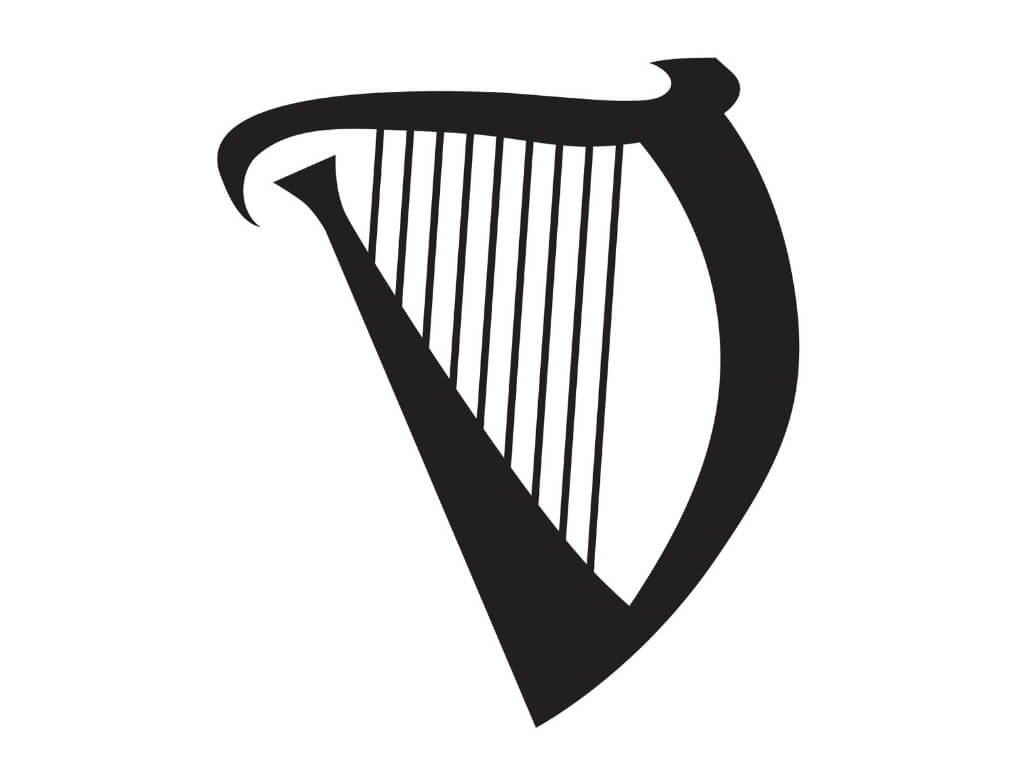
The Harp is the official symbol or emblem of Ireland, and Ireland is the only country whose official emblem is a musical instrument.
The current design is based on the 14th-century Brian Boru Harp, which is one of the oldest harps in Ireland and is now housed in the Long Room of Trinity College. I’ve seen this harp and it is incredible.
Known as the Harp of Erin, the harp was first depicted as a symbol of the Kingdom of Ireland on Irish coins from the mid-16th century.
The Harp was an emblem of resistance against the Crown of England and was banned at the end of the medieval period by Elizabeth I, resulting in a decline in the old Celtic Harp traditions. It took over 200 years for it to find its way back into Irish culture.
The harp is said to symbolise the immortal soul that can pass through death o eternal life.
Today, as well as being the emblem of Ireland, it is also used in the following places
- Guinness symbol (although it is right-facing, pictured below)
- Ryanair
- Irish Passports
- Official Government seals and documents
- The back of coins minted in Ireland
The left-facing version is the official emblem of Ireland and is trademarked.
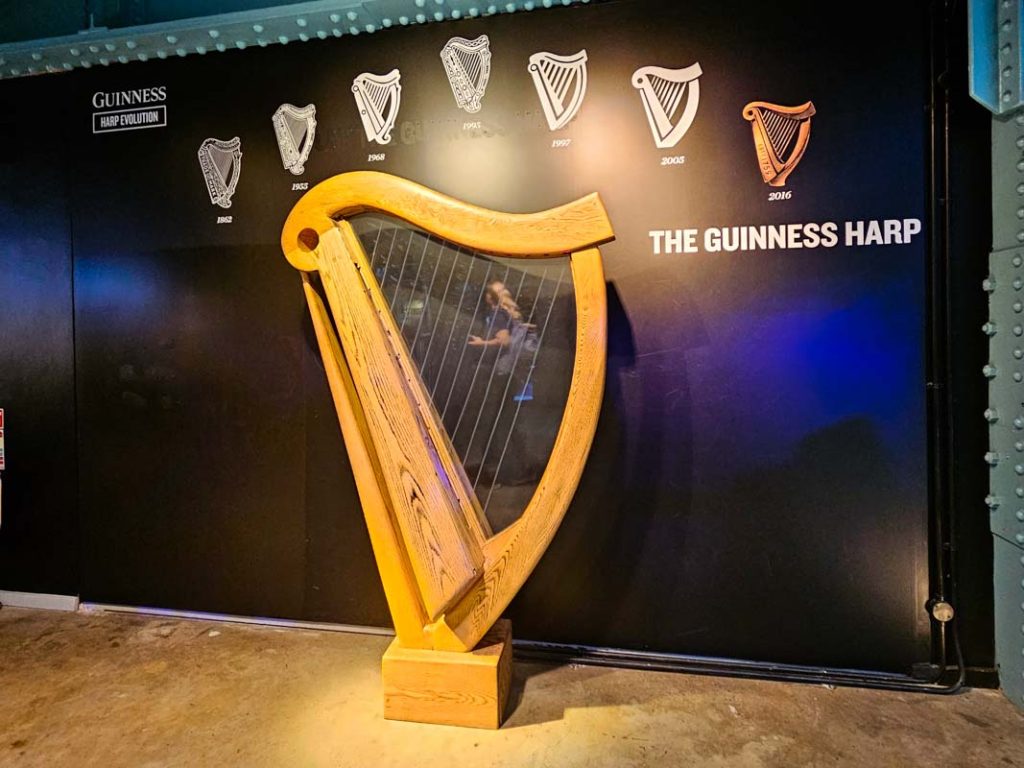
4 Celtic Tree of Life
The Tree of Life symbol has been dated back to the ancient Egyptians who carved it on tombs to symbolise eternal life.
The Celtic Tree of Life, or Crann Bethadh, features in history and religion including Celtic mythology where it was believed to possess special powers.
To Celts, it symbolised strength, long life, nobility, and wisdom. It also symbolised harmony and balance. It can represent rebirth, as the Celts derived the meaning of rebirth from the seasonal changes of trees.
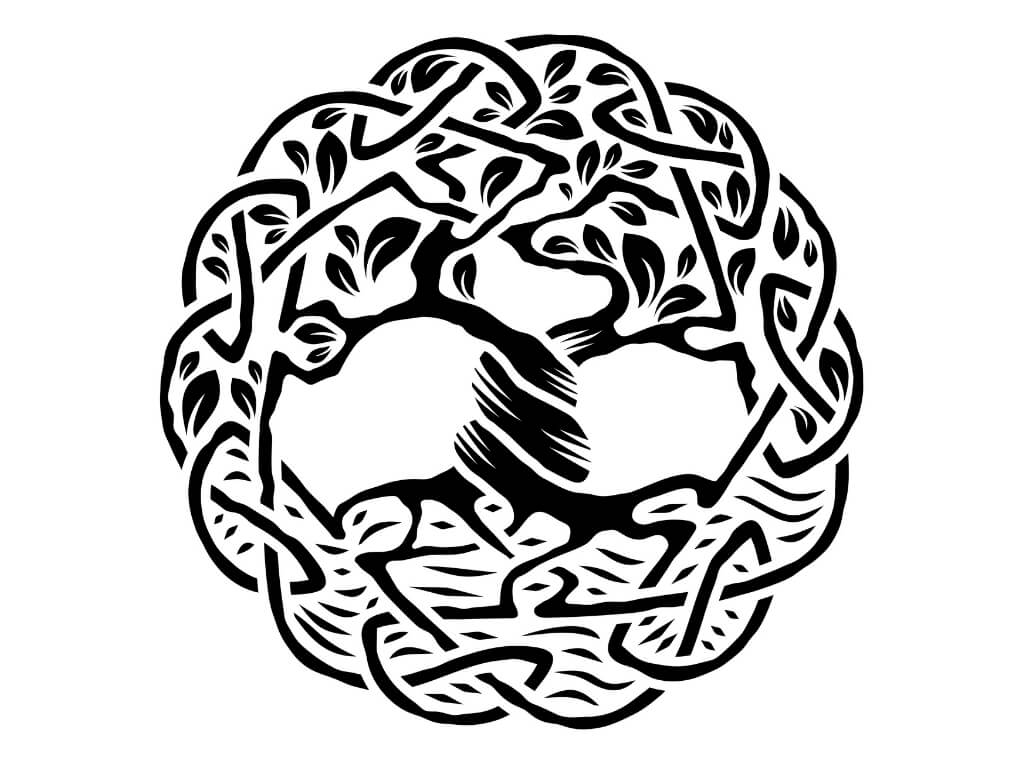
The Tree of Life represents a connection between the lower and upper worlds to the Earth’s plane and symbolised forces of nature coming together in harmony and balance.
Druids believed in the connection between heaven and earth, and the Tree of Life is a symbol of this connection.
Typically the Tree of Life takes the form of an oak tree. The Celts believed trees were ancestors of human beings, with the largest oak considered the most important Tree of Life.
They planted or kept one large tree in the centre of their fields (representing the centre of the world) where they held special meetings and it provided shelter and food for wildlife.
The most sacred tree was the oak and the origin of the word ‘door’ comes from the Celtic name daur. The oak was seen as a ‘doorway’ to the otherworld, the realm of the Fairy.
As well as being a doorway to the spirit world, it acted as a guard on the land. The Celts believed that their enemies were rendered powerless if their sacred tree was felled.
The Tree of Life is a popular Celtic symbol used in jewellery.
💡 Did you know that the Celts’ reverence for trees was the basis for the formation of the Celtic Ogham Alphabet which is also known as the Celtic Tree Alphabet, and also the Celtic Calendar?
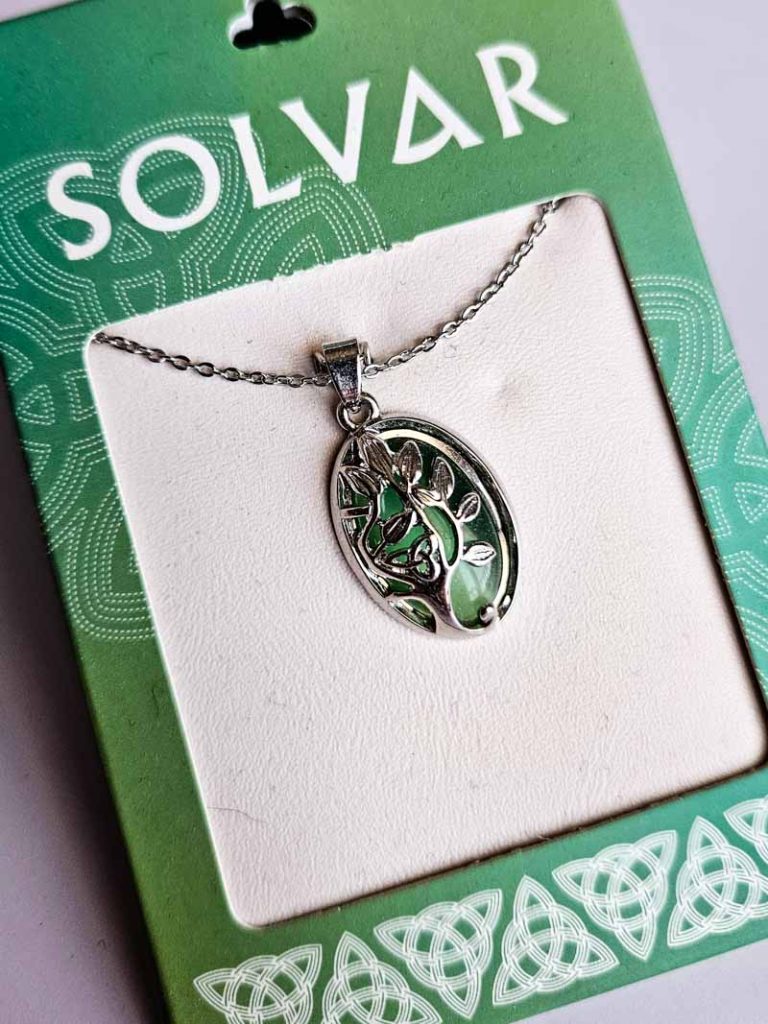
5 Triquetra (Trinity Knot)
The Triquetra or Trinity Knot is composed of three interlaced arcs and is an ancient symbol with multiple meanings across different cultures.
The Latin meaning of a triquetra is three-cornered. It is one of the best-known symbols in Celtic culture and has been seen throughout history since the Iron Age from around the 4th century BC.
It has been used in ornamental design in architecture and medieval manuscripts and is seen often in the Book of Kells. The Triquetra also bears a resemblance to the Valknut, a pagan symbol in Norse mythology.
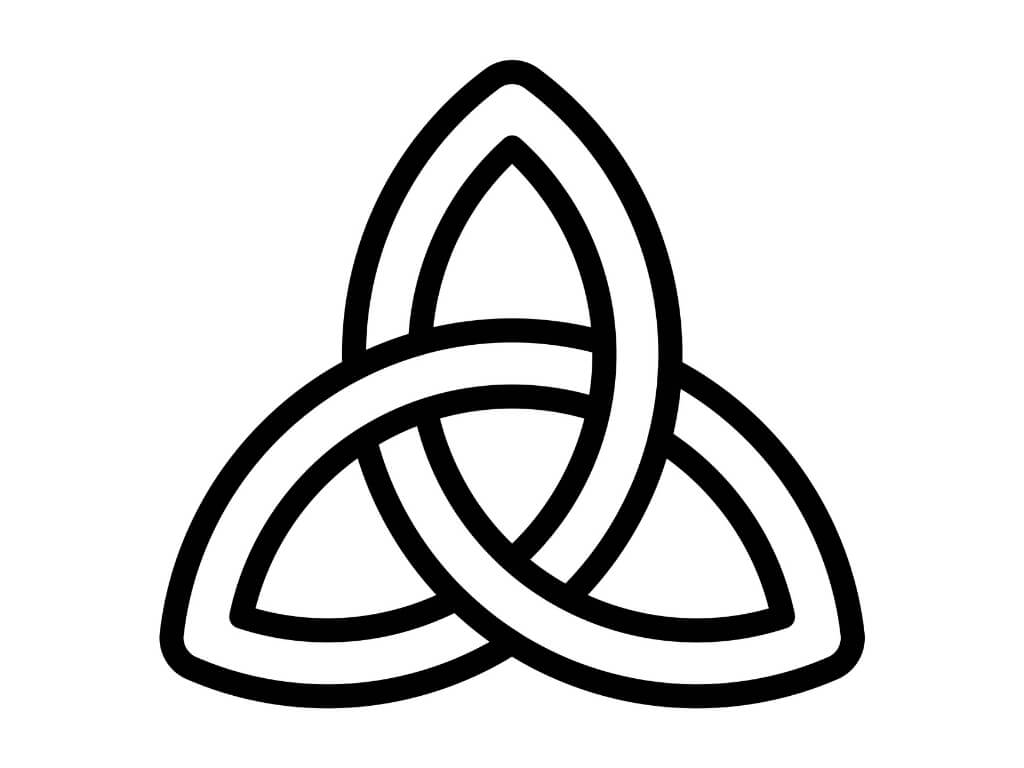
One of the triquetra symbol meanings is as a representation of the neopagan goddess as a mother (creation), maiden (innocence), and crone (wisdom).
For some Celts, it represented the three forces of nature Earth, Fire, and Water, and for others, the three elements of Earth, Sea, and Sky.
The Triquetra was used as an early representation of the Christian Trinity. Other meanings of the Triquetra are
- As a symbol of Ireland’s ancient culture.
- Eternal love (it is also known as an Irish Love Knot).
- To outline the stages of a woman’s life.
- As a gift to convey a wish for longevity, as it represents an uninterrupted life cycle.
Sometimes the Triquetra is encased in a circle as a means to emphasise unity or eternity.
Other times it has an interlaced circle representing a cycle such as life/death/re-birth, past/present/future, and father/mother/child. This is known as the Trinity Knot.
In the 1980s Jim McCabe planted a sylvan Trinity Knot forest for all to enjoy.
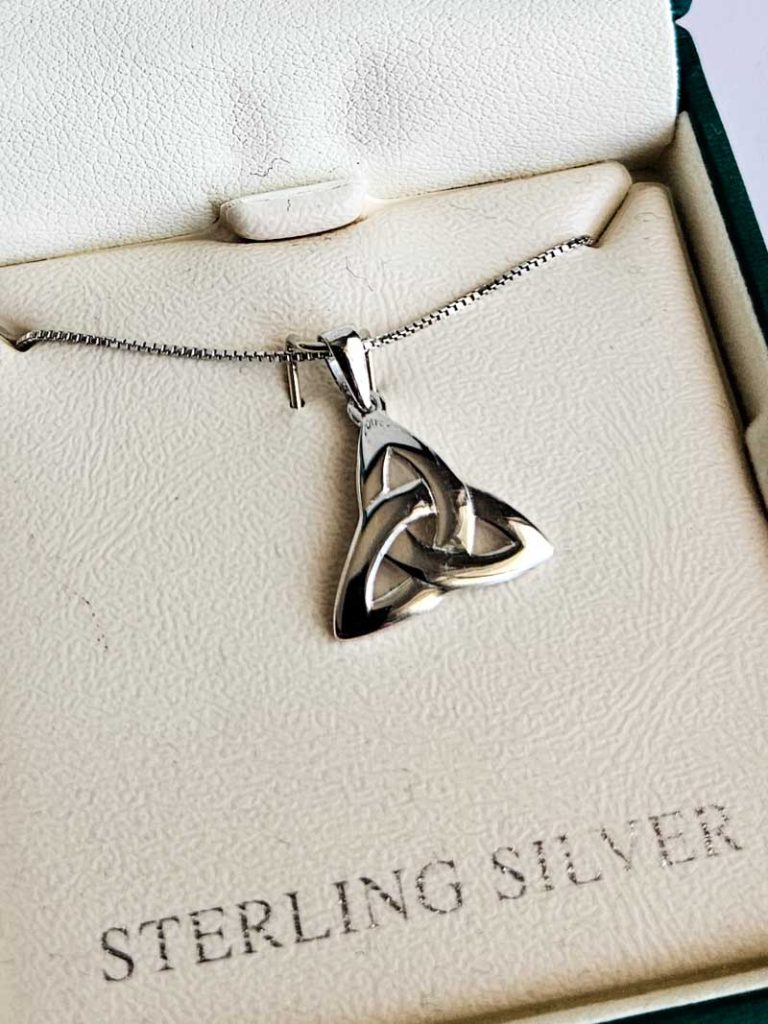
6 Shamrock
The Shamrock is the national flower of Ireland and is a well-known symbol of Ireland. It is a young sprig and is not to be confused with a four-leaf clover.
The word shamrock comes from the Irish seamróg (seamair óg) meaning young clover or sprig.
The shamrock was an important symbol to the Druids as it represented the triads; sayings or lessons in threes in Celtic wisdom. The plant was respected and also used as an edible healing herb.
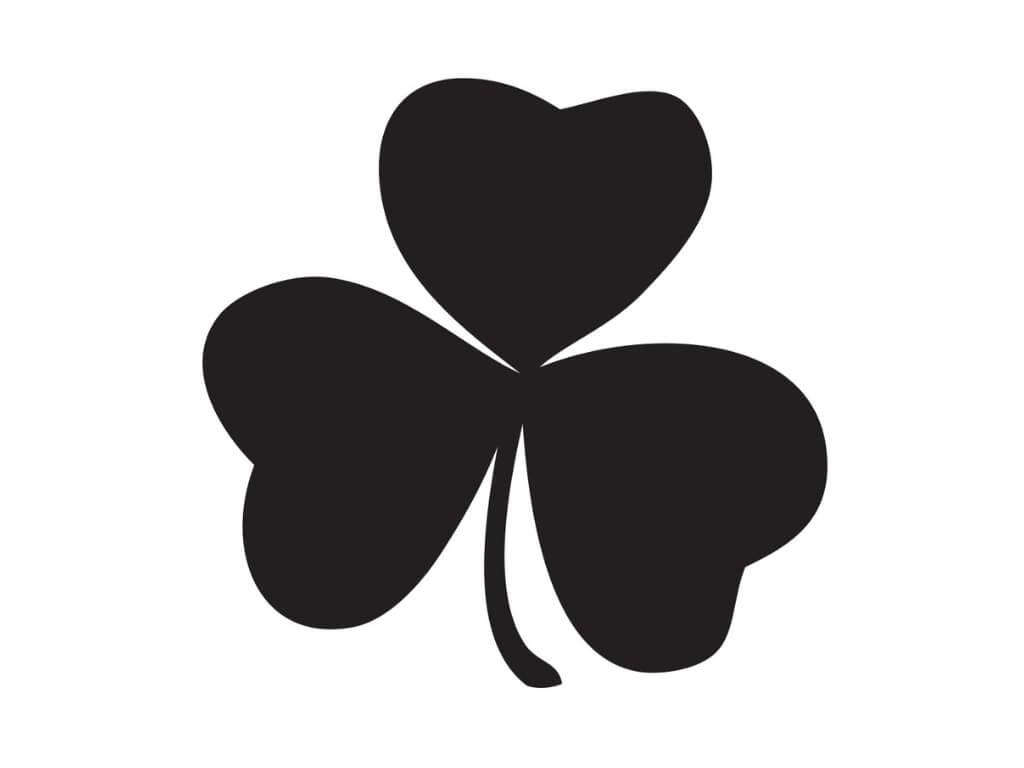
It has been associated with the Celtic goddess Ana/Anu with the three leaves representing her status as maiden, mother, and crone of Ireland.
It is believed to have been used as a metaphor for the Christian Holy Trinity by Saint Patrick.
In pagan Ireland, the number three was a significant number and the Irish had many triple deities, so it is believed the shamrock aided St Patrick in explaining the Holy Trinity to the pagans and converting many to Christianity.
It is chiefly associated with St Patrick’s Day during which there is a tradition of wearing sprigs of shamrocks in hats or lapels.
The shamrock has been a symbol of Ireland since the 18th century and is used in a variety of places and by a variety of companies including
- Tourism Ireland
- IDA Ireland
- Án Post (regularly feature shamrocks on postage stamps)
- Irish Rugby Union
- Aer Lingus (whose tails bear the shamrock and whose air traffic control call sign is “Shamrock”)
It is also a registered trademark of Ireland, and very popular in jewellery and souvenirs.
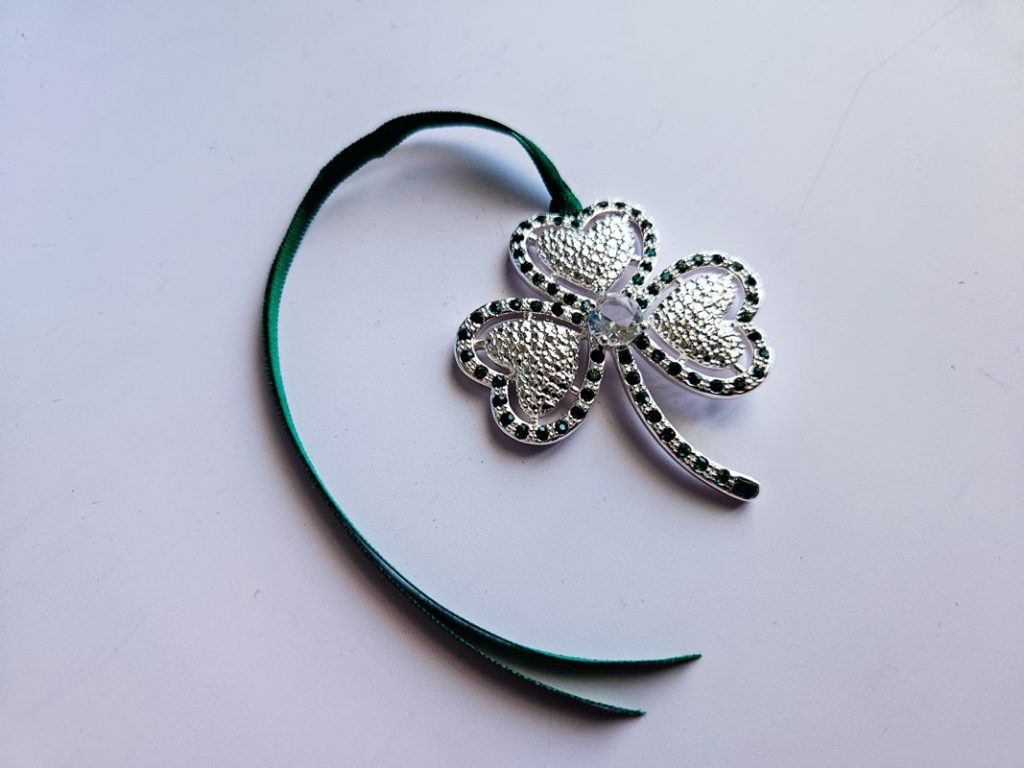
7 Triskele (Triskelion)
A Celtic spiral symbol that is also widely seen in Celtic culture and design is the Triskele. Ir can be found in ancient Celtic carvings and art decorations and has been used since the Neolithic Ages.
Derived from the Greek word Triskeles, Tri meaning three, and Skelos meaning leg, its literal meaning is three legs. It is a complex ancient Celtic symbol and is related to Celtic traditions.
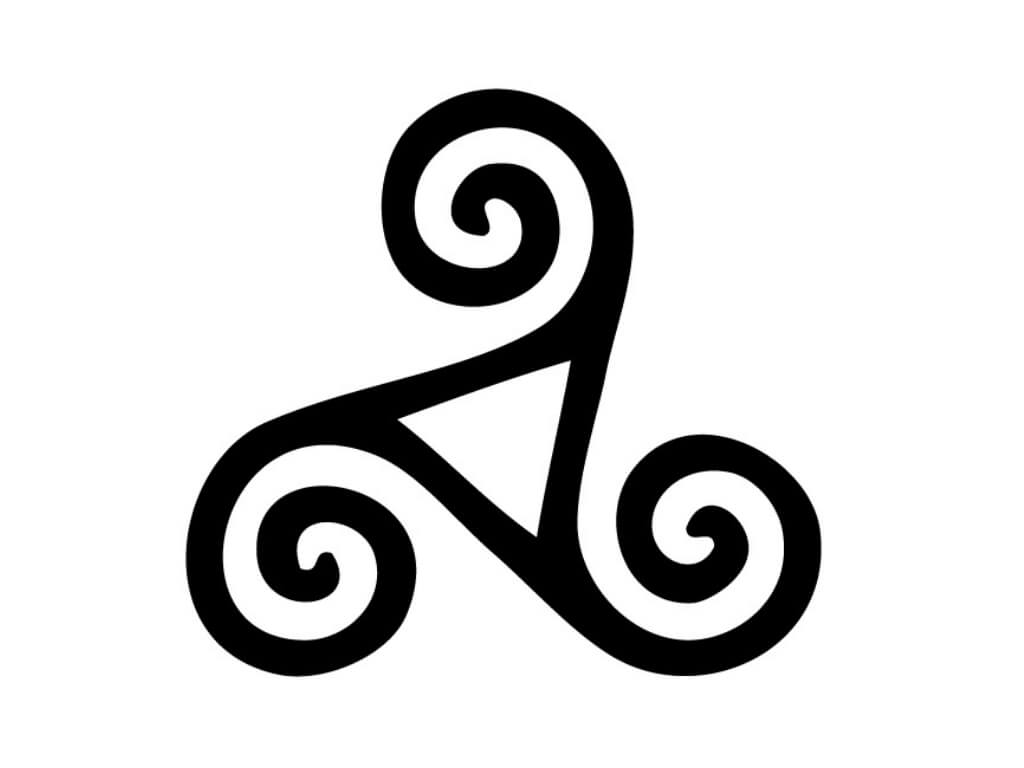
It can be found in artefacts from the European Neolithic and Bronze Age, with some continuation into the Iron Age.
One of the best places to view it is on the entrance stones to the megalithic tomb of Newgrange (dating from 3200 BC, see picture below). The entrance stone has lots of these (see my picture below). There is also one within the tomb itself which you can see, as I did, if you visit.
However, it is older than this, first appearing in Malta between 4400 and 3600 BC.
As one of the oldest Celtic symbols, it reflects many areas of Celtic culture from 500 BC onwards.
In Ireland, it is associated with Manannán mac Lir, the Celtic God of the Sea. It is thought to signify energies and can have different meanings depending on the era, culture, mythology, and history of its use.
Meanings of the Triskele include (some similar to the Triquetra)
- Life, death, rebirth
- Spirit, mind, body
- Earth, water, sky
- Land, sea, sky
- Maiden, mother, wise woman
- Mother, father, child
- Past, present, future
- Power, intellect, love
- Creation, preservation, destruction
- The spiritual world, present world, celestial world
It has also been used to represent the Holy Trinity.
The Triskele is used as an emblem on the flags of both the Isle of Man and Sicily.
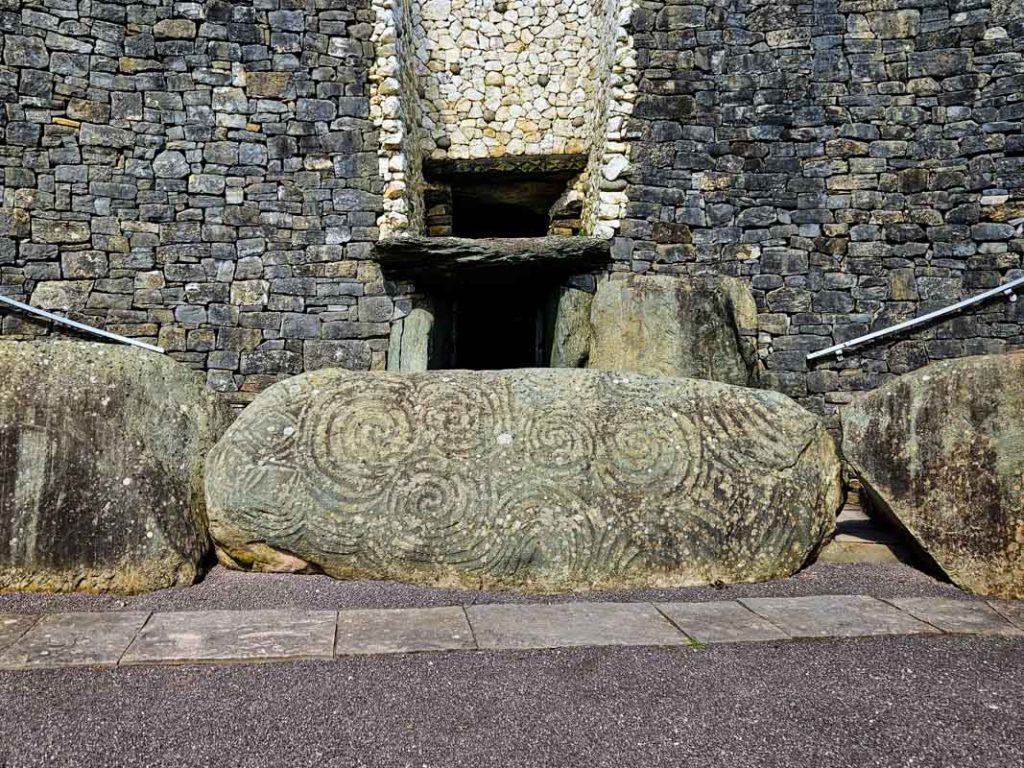
8 Dara Knot
Celtic knots and their meanings are varied but one of the most beautiful is the Dara Knot. This intricate knot resembles a tree and gets its name from the Irish word doire which means oak tree.
It first appeared in the 3rd and 4th centuries and Celtic Knots such as the Dara Knot were used on monuments, in manuscripts, and in temples from the 8th century. It is one of over eight basic variations of the Celtic Knot.
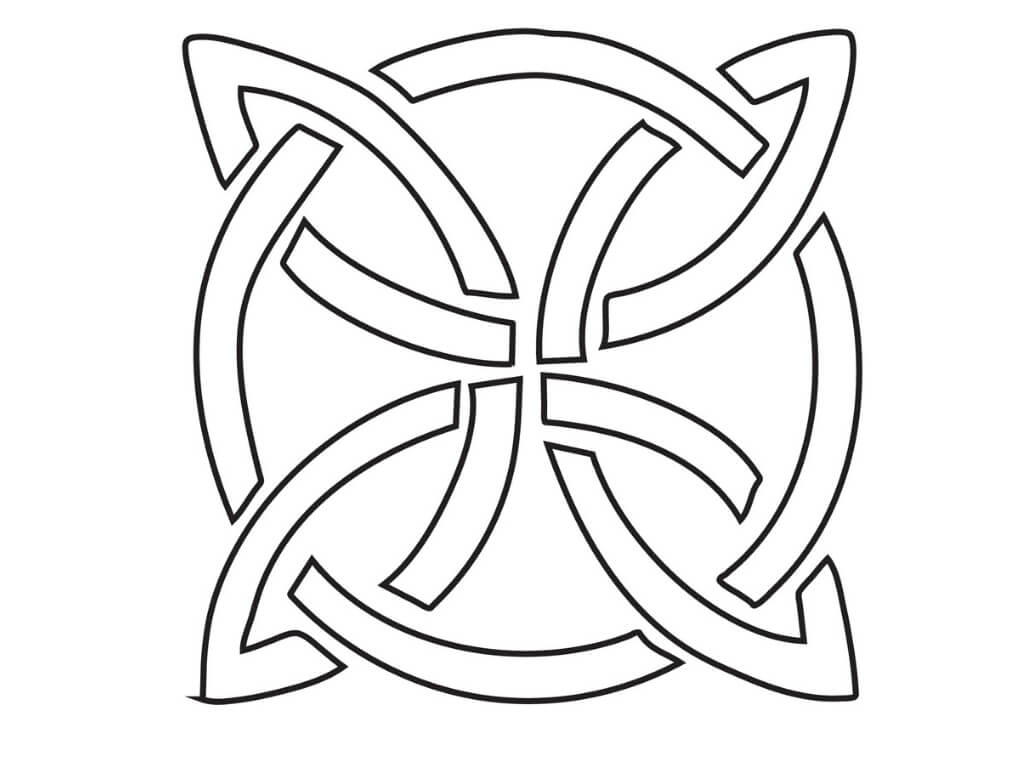
The Dara Knot is characterised by intertwined lines with no beginning and no end. It is a knot said to show the tree and root system of the sacred oak, a common theme through the varieties of this knot.
Oaks, as previously mentioned, were considered sacred in Celtic culture, particularly by the Druids, and the intricate root system is represented in the Dara Knot.
The ancient Celts are believed to have called upon this symbol for strength and wisdom in difficult times and situations. It represented strength, wisdom, power, and leadership. Other meanings of the Dara Knot include
- Destiny
- Endurance
- Connection
- Community
It most commonly symbolises a never-ending life cycle and is said to offer the wearer of such a knot inner strength and divinity.
9 Carolingian Cross
This 9th-century Christian symbol of the crucifixion of Christ is composed of both mixed Christian and Celtic pre-Christian concepts.
It is made from four triquetras or four Celtic unity knots and is a braided variation of the Everlasting Cross. It is often called the Triquetra Cross.
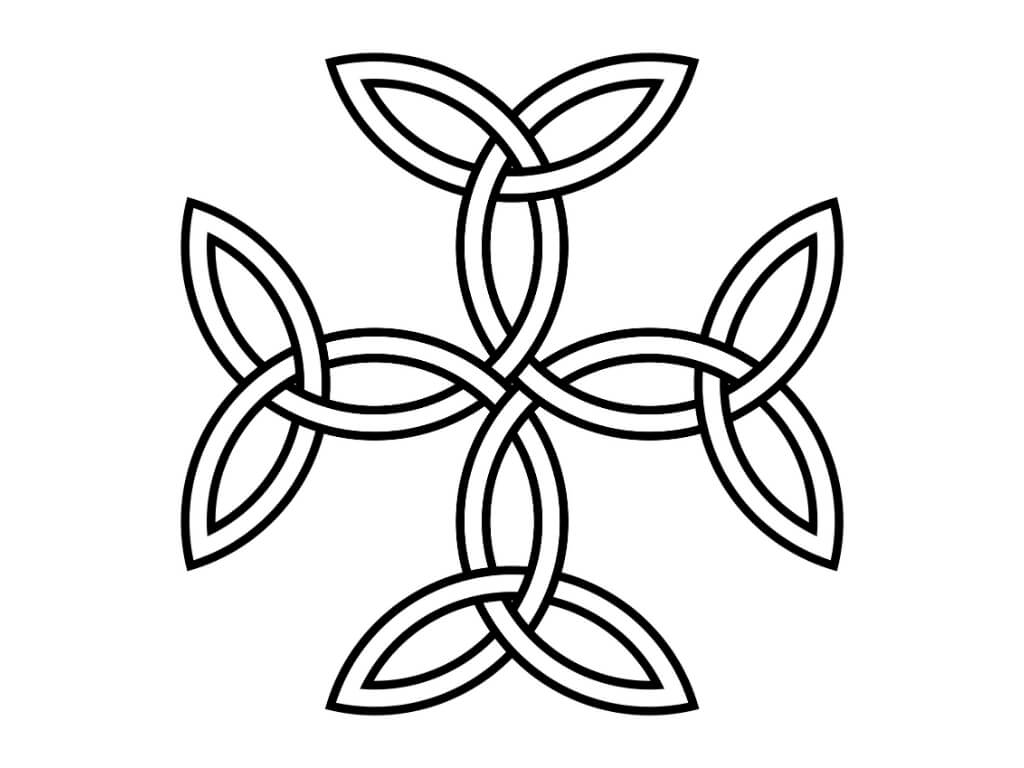
It was named after the Carolingian Dynasty of France, descendants of the 7th century Arnulfing and Pippinid clans who were a Frankish noble family (part of the Celtic Germanic race).
The fusion of the Triquetra and cross shape meant the Carolingian Cross represented a coalition of Christian and pagan groups.
This Celtic Cross symbol is said to represent the ‘eternity of god’. Other meanings include
- Eternity
- Balance
- Unity
- Temperance
The four arms have been said to represent the father, son, holy spirit, and the unity of the cosmos, as well as the four seasons.
10 St Brigid’s Cross
St Brigid’s Cross is a Celtic symbol, often seen outside Irish homes on the feast day of St Brigid which is the 1st of February. It consists of four arms made from woven straw, reeds, or rushes, tied at ends with a woven square middle. We have one at home.
The cross is believed to keep evil, fire, and hunger from the house from which it is hung. Once woven, it is blessed with Holy Water, and the following recanted
May the blessing of God, Father, Son and Holy Ghost be on this Cross and on the place where it hangs, and on everyone who looks upon it.
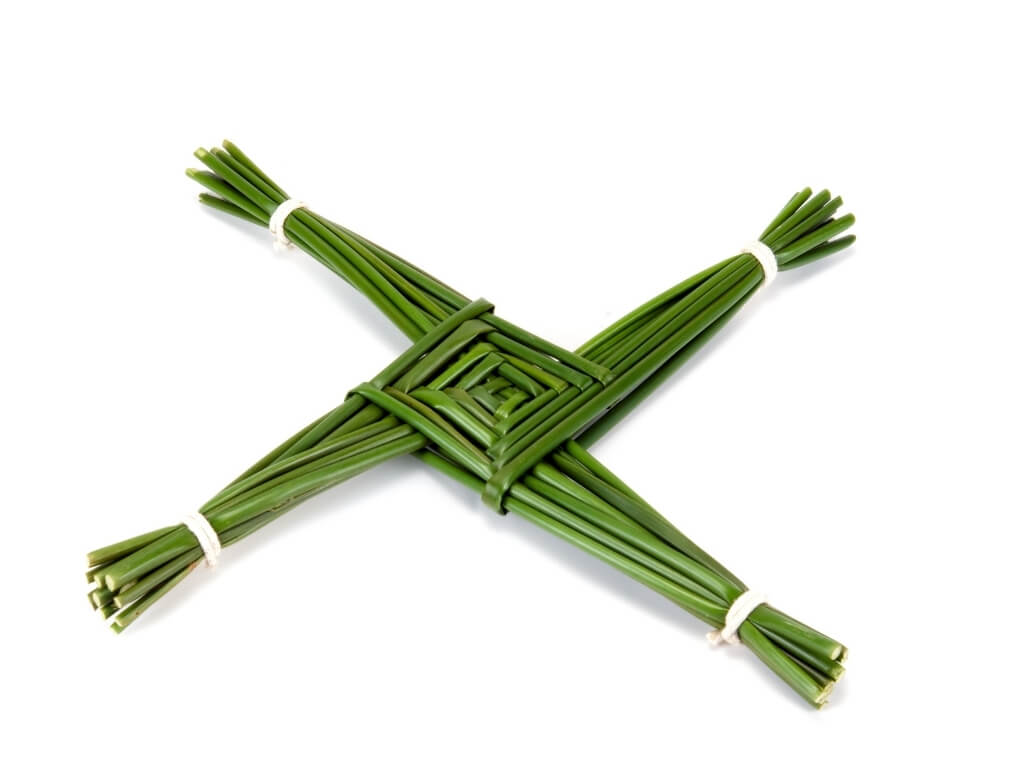
It is attributed to St Brigid, a nun born in Dundalk in 450 AD but it is also associated with Brigid of the Tuatha de Danaan. The Tuatha de Danaan were a supernatural race in Irish Mythology and Brigid was the life-giving goddess.
The Celtic origins lie with the feast of Imbolc, when the Celtic Goddess Brigid was celebrated on her feast day, at the beginning of Spring, halfway between the winter solstice and the spring equinox, and was one of four Gaelic seasonal festivals, along with Bealtaine, Lughnasadh, and Samhain.
In Christianity, it is believed St Brigid weaved the cross at the deathbed of a pagan Lord (or her father) who asked to be baptised upon hearing what it meant. It is St Brigid who is believed to have created the first unique cross at this moment.
11 Ailm
Derived from the letter ‘A’ on the Celtic Ogham alphabet where the cross symbolises the letter ‘a’. There are few written records about the meaning of this Celtic symbol.
The symbol is linked with pine, the European silver fir, and occasionally the Cornish elm tree, which were all linked to strength, resilience, and endurance due to their ability to survive adverse weather conditions.
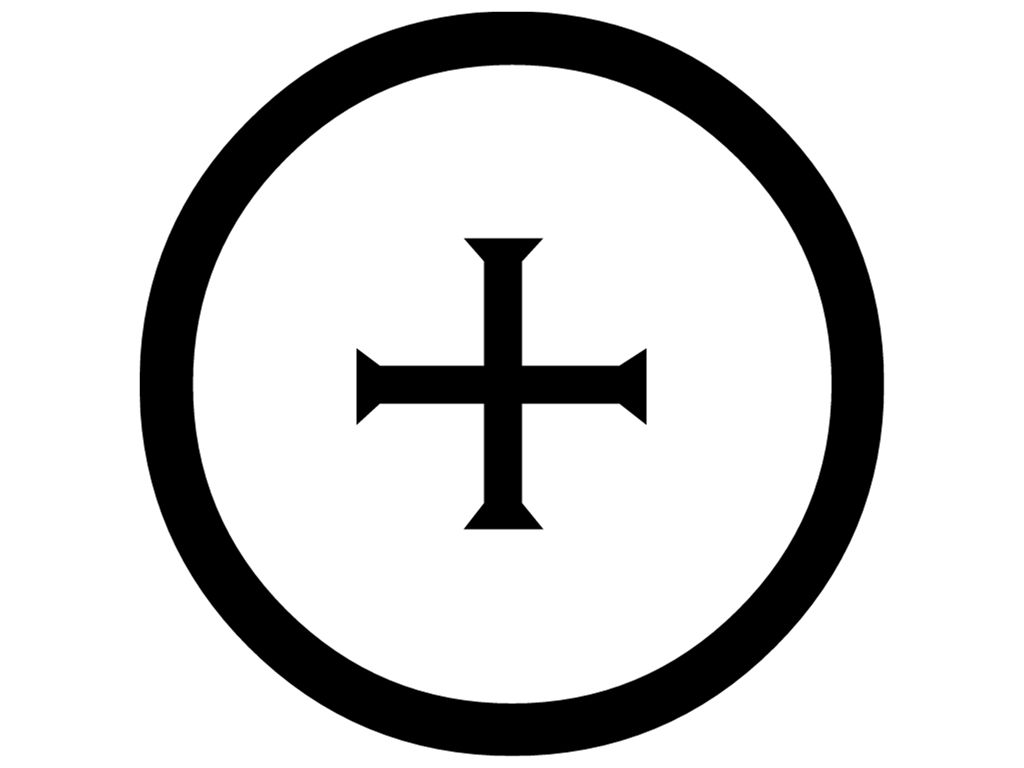
Therefore, the Ailm Celtic Symbol represents strength, resilience, and endurance. Further meanings of the symbol come from the circle surrounding the cross, signifying wholeness and an intact soul.
Together, the meaning becomes pure energy, healing, fertility, protection, and clarity.
12 Celtic Motherhood Knot
The Celtic symbol for motherhood is an adaptation of the Triquetra. It typically consists of two heart-like shapes.
One of the hearts is placed lower than the other and they are intertwined in a continuous knot symbolising eternal love.
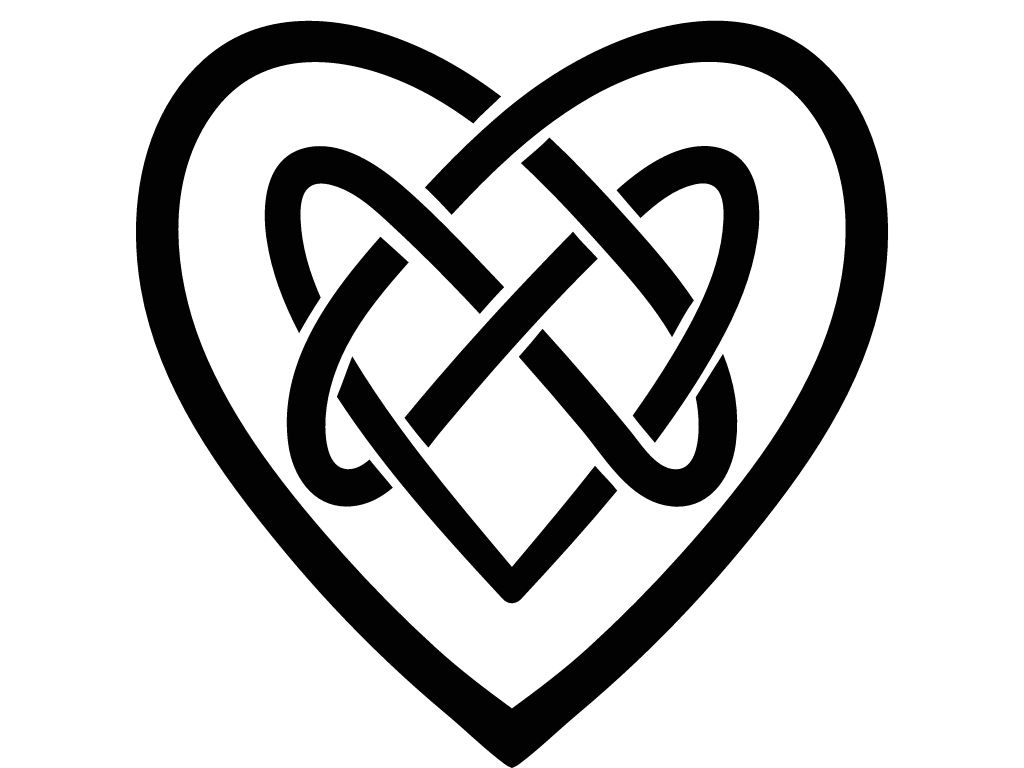
It represents the unending love between a mother and child, both in Celtic and Christian history.
This Celtic symbol has been seen in Christian manuscripts. Since it is based on the Trinity Knot which originated around 3000BC, it is believed this Celtic symbol for motherhood came after.
There can be a few versions of the Celtic motherhood knot, including some that have more than two hearts, and jewellery based on this Celtic symbol are a popular gift on Mother’s Day.
13 Serch Bythol
A lesser-known Celtic symbol is the Serch Bythol, which is Welsh for everlasting love (between a couple).
It is one of a few Celtic symbols for family. The literal meaning comes from the words ‘serch’ meaning love, and ‘bythol’ meaning perpetual, meaning it often symbolises the solidarity of family and commitment to family.
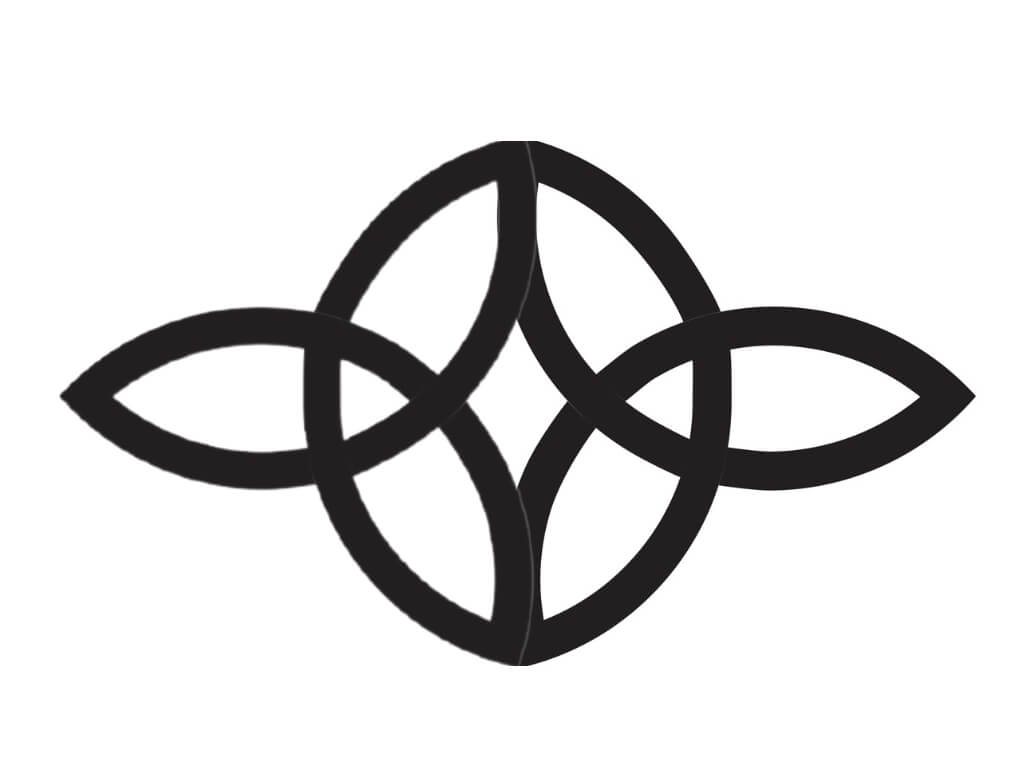
The Serch Bythol is made from two other Celtic knots, the Triquetra or the Trinity knots.
Two Trinity knots are placed side-by-side with the arcs combining to create a central circle. Three arcs of the triquetra represent mind, body, and spirit, and the central circle denotes eternity.
Celtic Symbols FAQ
Last Words on Celtic Symbols
These are just a few Irish Celtic symbols and meanings and are among the most popular, both in ancient times and modern-day Ireland.
They include Celtic knots, crosses, and symbols now synonymous with Ireland. There are also two which are official emblems or symbols of Ireland that are trademarked.
Read more about Irish culture and traditions:
- Irish Mythological Creatures
- What is a Banshee?
- The Best Festivals in Ireland You Cannot Miss
- Best Foods to Try in Ireland
- Best Gifts from Ireland
- What Are the Irish Known For?
- Irish Slang Words and Their Meanings
- 101+ Irish Mammy Sayings
- Facts About Ireland to Know Before You Go
- What is the National Bird of Ireland?
- What is the National Animal of Ireland?
Pin for later!
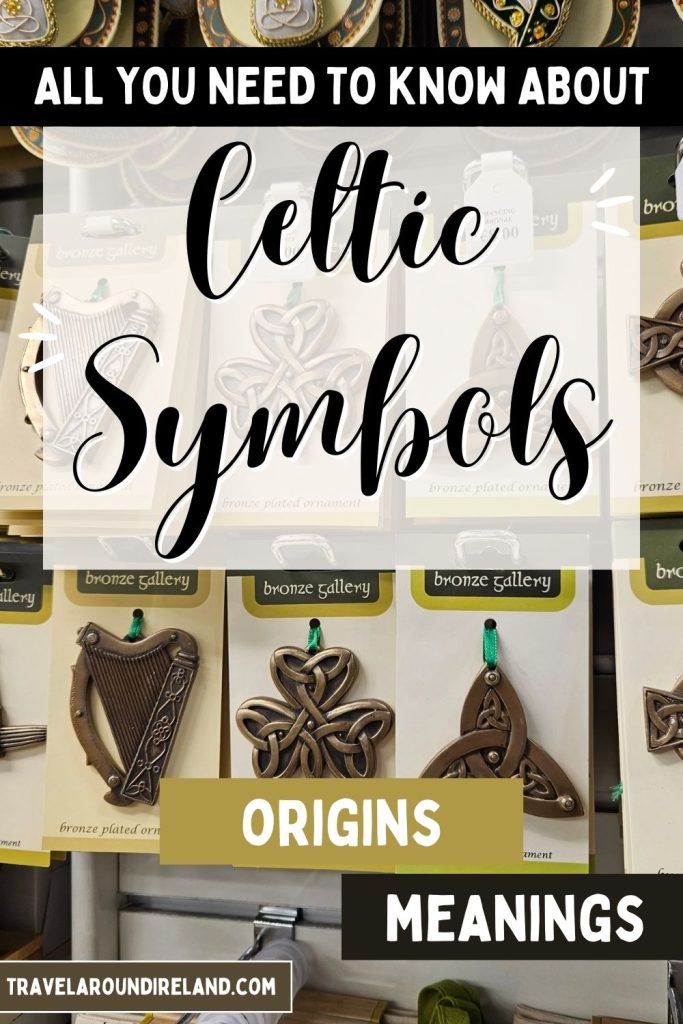
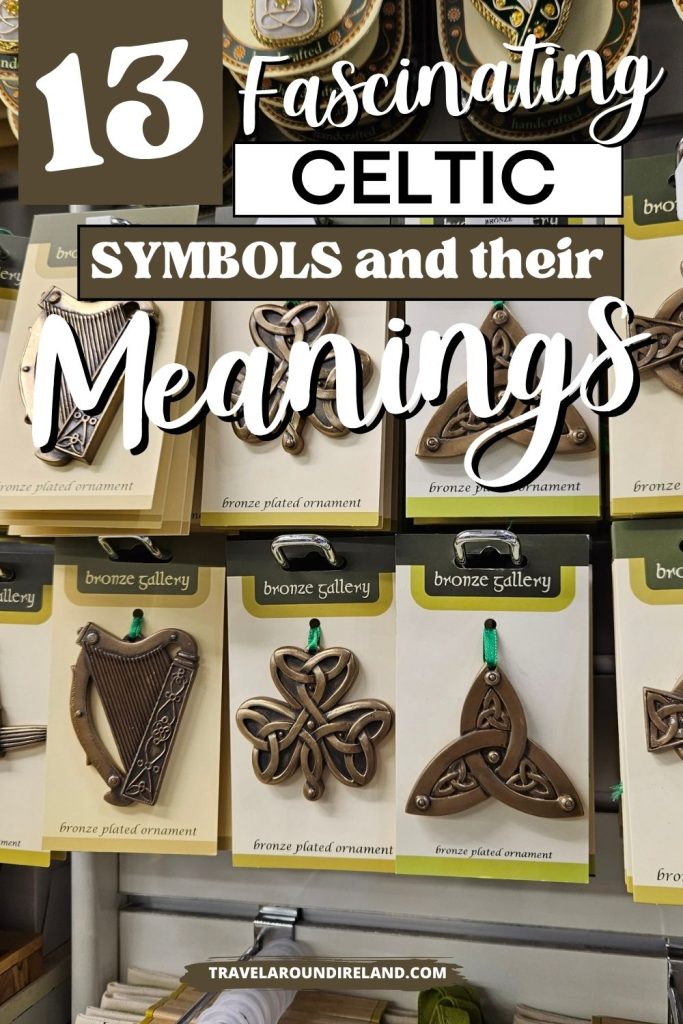
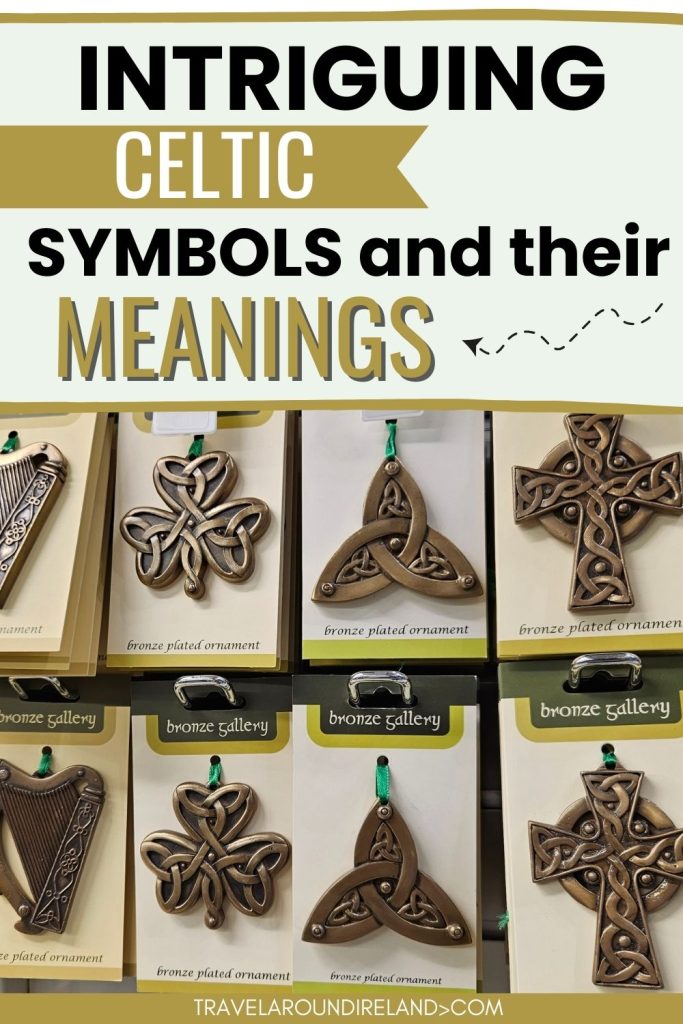

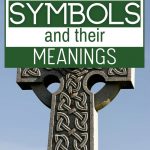
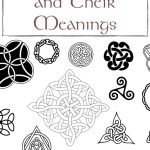


Fantastic piece. Thank you for explaining some of the beautiful celtic artworks that I have admired since a little girl, right through current times. It has heavily been used in my artwork, and when I get the chance to do more, I will contue to use it. Wonderful article.
How would I get permission to use a symbol?
You cannot use any image from my site. I suggest you source any image you require from a dedicated picture or images supplier such as Deposit Photos.
Hi. The triskelion is actually at Newgrange. Not Newbridge!
Typo! Thanks so much for pointing it out to me!!! Edited.
Recent archeology has proved that the earliest Celtic Cross dates from when Christianity was already firmly established in both Ireland and Scotland, thus it has no connection to paganism or pre-Christian culture.